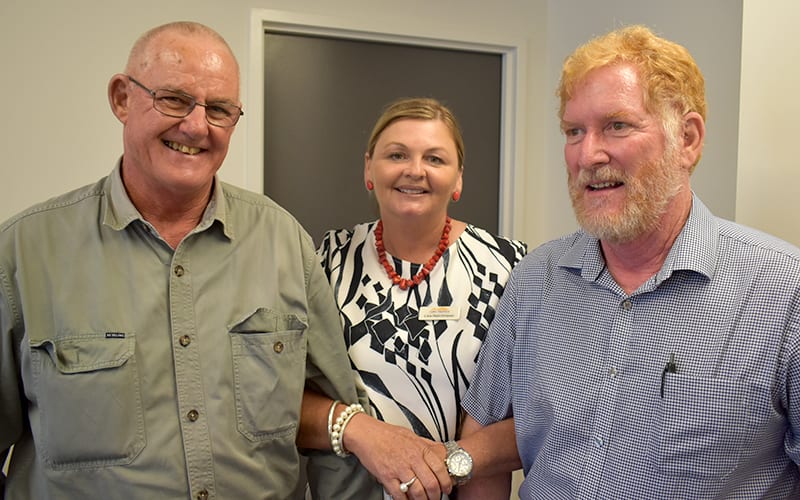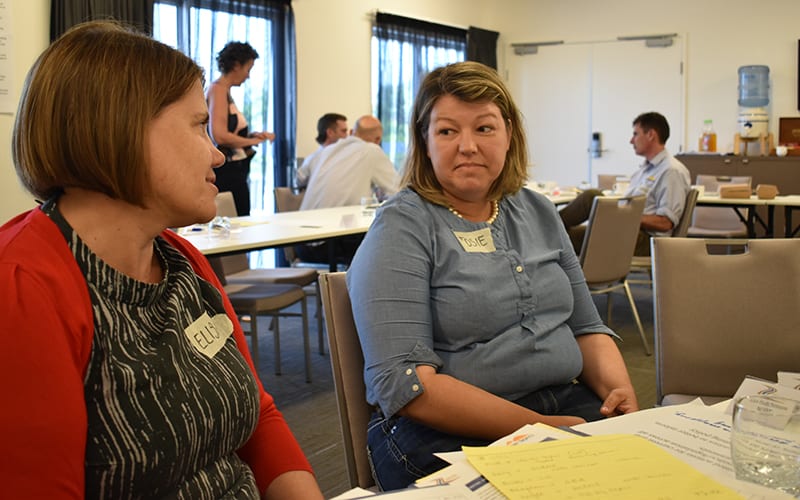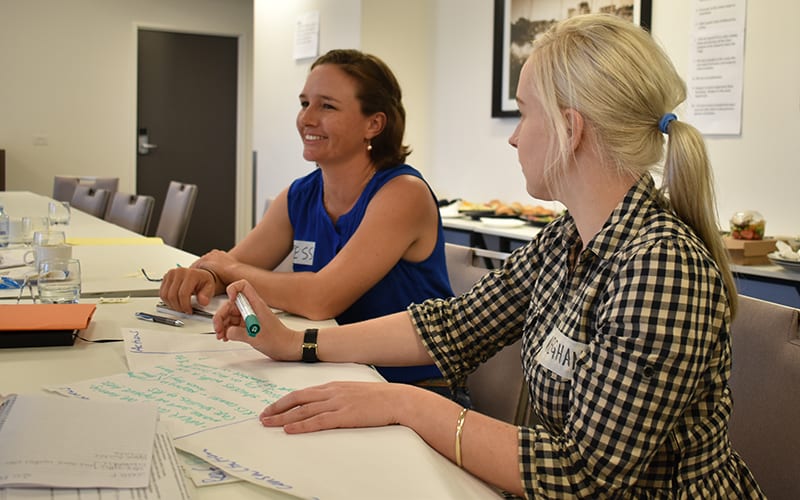Bob Harris, Glencoe, Lisa Hutchinson LDC, Peter Webley, DNRME.
Andrew Yates LDC, Susan Vail, Salisbury Plains, Lisa Hutchinson, LDC, Jessie Norman, Mt Aberdeen, Kerry Hammett, DNRME.

Grazier Peter Anderson,
Glenlea Downs near Clermont
“I thought it was a great day and a fantastic initiative. There was a genuine spirit of cooperation by all participants and all worked collaboratively towards finding workable solutions.”

Grazier Susan Vail,
Salisbury Plains near Bowen
“Navigating the regulatory process can be confusing resulting in time delays and additional requirements, especially when you’re being passed from one government department to another trying to get an answer.”

Grazier Bristow Hughes,
Strathalbyn near Collinsville
“As a grazier, there can be short windows in which you have the time and money available for a project to improve your land and business. As soon as you start the process of seeking approval for that project, you lose momentum because it’s so drawn out. If the government can close that lag time, then that would be a good outcome for the grazier, the environment and the government.”
Regulating for agricultural and public outcomes
TO address frustration about the complexity of the regulatory system affecting agriculture – specifically grazing – the LDC project has held a focused roundtable with graziers and government agency representatives to tackle the challenges head-on.
The regulatory environment has been a longstanding concern for agricultural producers.
From a graziers’ perspective, the montage of regulations affecting their business is often cumbersome and confusing, can stifle environmental performance, and delay innovative projects.
The cost of compliance with regulations is often cited as a major barrier to the viability and profitability of graziers.
Regulators acknowledge the problems conveyed by the agricultural sector.
However, they report that the static nature of current laws and regulations does not provide the flexibility or adaptability needed to address the concerns in a quick and timely manner as desired by the agriculture industry. Limited resources and competing mandates further compromise regulators’ ability to address many of the challenges.
At February’s roundtable, held in Townsville, these stakeholder groups met in good faith to identify areas of agreement and to identify short-term and long-term actions to help address key regulatory challenges faced by graziers.
Given the complexity of this undertaking, February’s roundtable is the first of what is expected to be a series of roundtables to be held this year.
Initial actions that were identified fit into two categories – relationship building among stakeholders and easing navigation of the regulatory system – and serve to improve and simplify the existing regulatory system.
Desired long-term outcomes identified by the stakeholders:
- Reduce frustration and misconception by building understanding among stakeholder groups
- Increase the flow of critical information between regulators and the regulated
- Engage stakeholders early and effectively in policy rule making and implementation planning
- Improve interagency coordination
- Provide a regulatory roadmap for common agricultural business activities to easily learn the requirements for project implementation – case studies to be developed to demonstrate impacts of legislation on the day to day management of a grazing business
- Establish one-stop-shops for permit assistance
- Improve the technical support capacity of agencies and others to assist farmers in meeting regulatory requirements
- Better accommodate innovative on-farm practices through through a co-mentoring program between graziers and government department/s
The roundtable focused on four regulatory areas. This is a summary of agreed actions which will be followed up at a roundtable planned for mid-year.
| REGULATION AREA | ACTIONS |
| Protected plants |
|
| Water Act |
|
| Vegetation management |
|
| Reef regulations |
|
For further information, or if you want to be involved in the roundtable sessions, contact Lisa Hutchinson on lisa.hutchinson@nqdrytropics.com.au or on mobile 0427 594 192
Elisa Nichols, DES, (left), and Queensland Food Futures president and grazier, Josie Angus, Kimberley Station.
Jessie Norman, Mt Aberdeen, (left) and Meghan Blackburn, OGBR.




